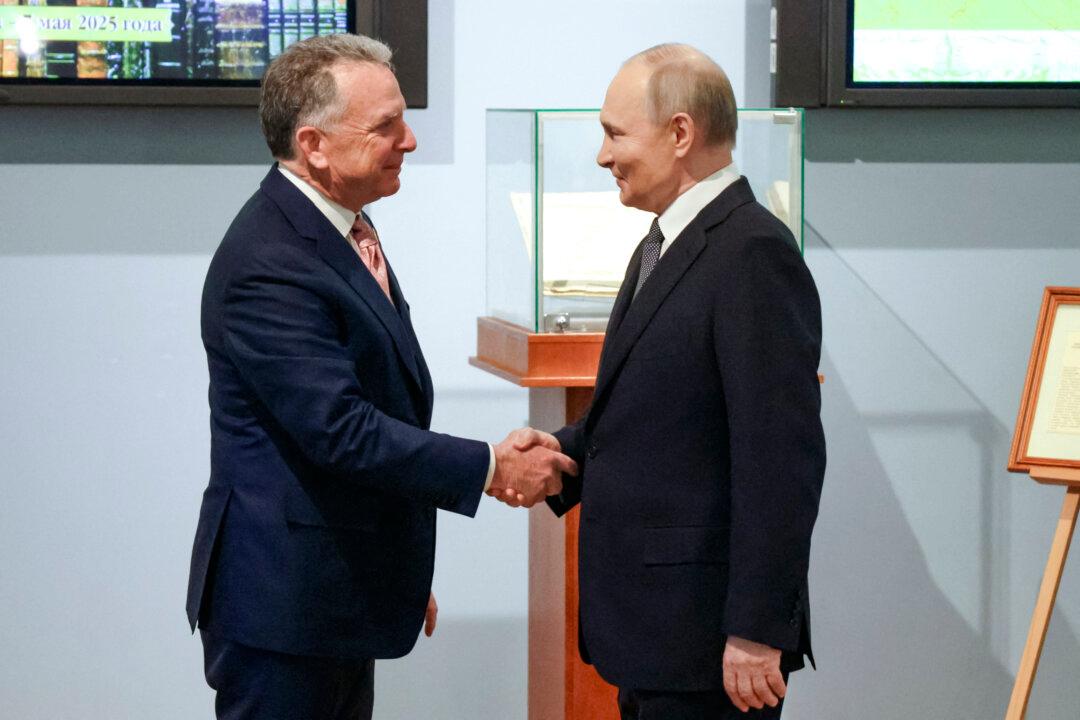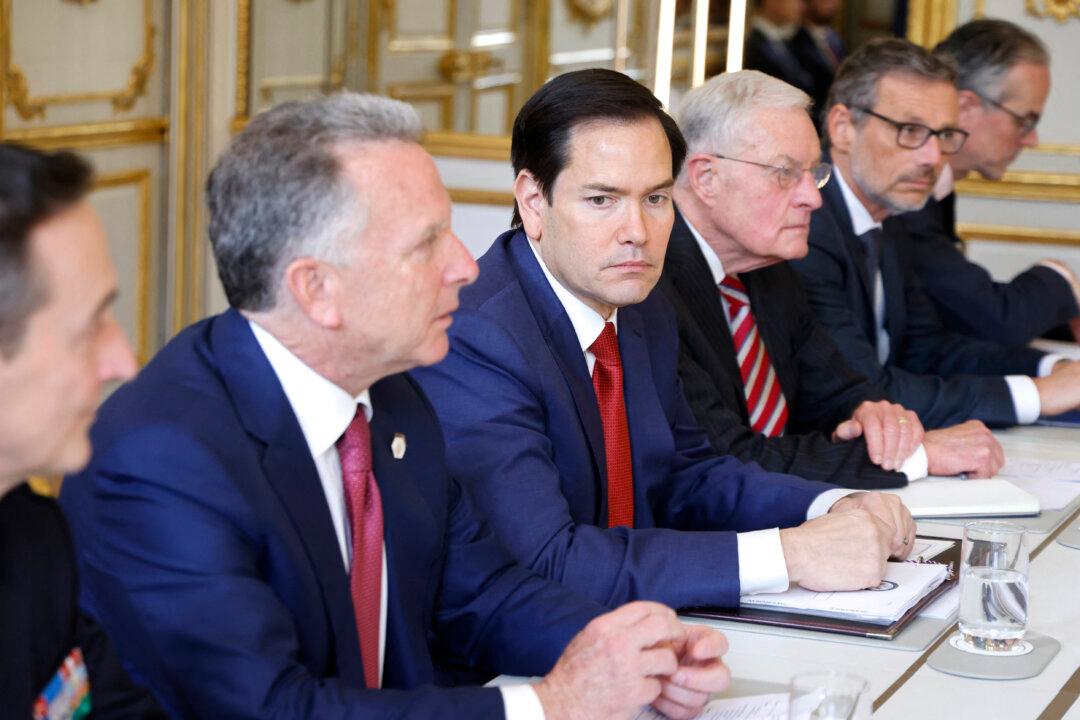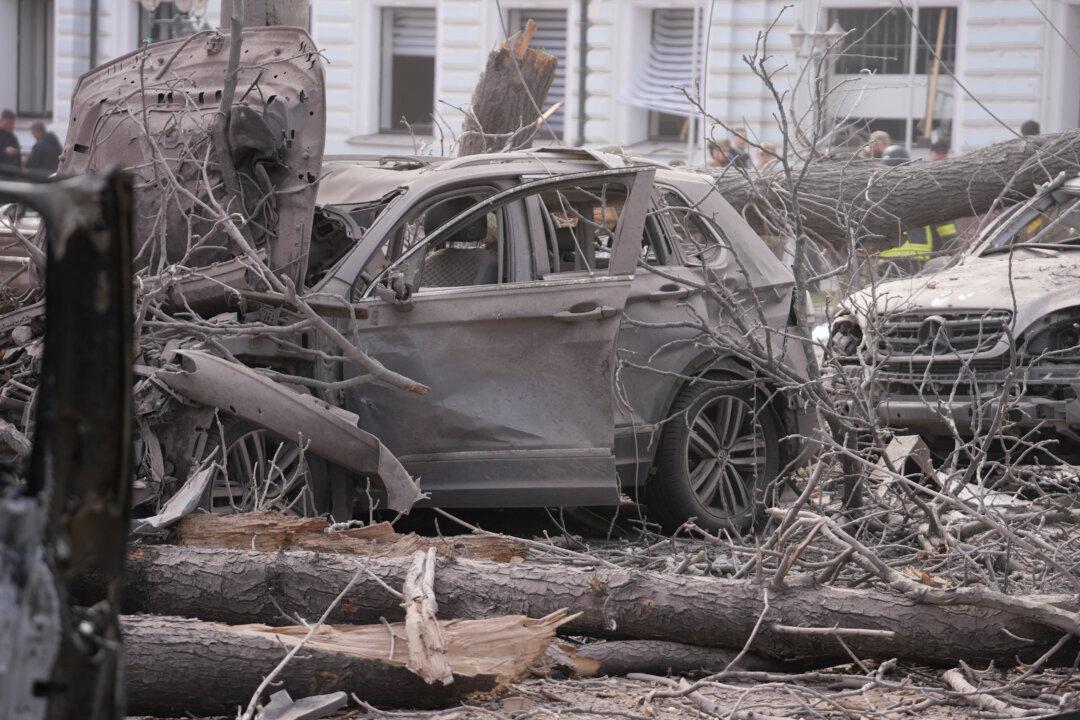The situation in Russia’s Kursk remains tenuous, acting regional governor Alexey Smirnov said on Aug. 9, as a large Ukrainian ground incursion into the region entered its fourth day.
“The situation in the Kursk region remains difficult,” Smirnov wrote in a social-media post.
A day earlier, local officials said 3,000 residents of Kursk’s border area had been evacuated, half of whom were now in temporary shelters.
According to Russian state media, a distribution center for humanitarian aid has been set up in the region, along with stockpiles of water, medical supplies, and emergency power generators.
On Aug. 6, hundreds of Ukrainian troops—backed by tanks, artillery, and armored vehicles—entered Kursk from northeastern Ukraine.
The next day, Russia’s defense ministry said its forces had stopped a Ukrainian bid to seize the border town of Sudzha, a key transit hub for Russian natural gas.
Hours later, Valery Gerasimov, Russia’s military chief-of-staff, informed President Vladimir Putin that combined Russian forces had halted the Ukrainian advance.
Nevertheless, Kursk’s acting governor declared a region-wide state of emergency in the face of continued “infiltration” by “enemy forces.”
Russia’s National Guard, meanwhile, stepped up security at Kursk’s nuclear power plant, which sits roughly 35 miles northeast of Sudzha.
On Aug. 9, Russia’s defense ministry claimed that Ukraine had lost almost 950 troops and more than 100 armored vehicles—including 12 tanks—since the armed incursion began.
In line with longstanding policy, it did not provide numbers for Russian casualties.
However, video footage has been posted online purportedly showing a convoy of burnt-out Russian military trucks sitting alongside a highway in Kursk.
According to Russian officials, five local residents have been killed—and dozens injured—by Ukrainian drone attacks and artillery bombardments.
It isn’t the first time that Kyiv has staged a major ground incursion into Russian territory.
In 2023, Russian forces repelled several large-scale assaults—into both Kursk and neighboring Belgorod—by what Moscow described as “Ukrainian saboteurs.”
Putin has described Kyiv’s latest incursion as “another large-scale provocation.”

Kyiv Breaks Silence
Ukrainian officials initially refrained from commenting on the cross-border assault.But on Aug. 8, Ukrainian President Volodymyr Zelenskyy—in an apparent reference to the incursion—praised the ability of Kyiv’s military “to surprise.”
In a video message the following day, he said Russia had “brought the war to our land and should feel what it has done.”
State Department spokesman Matthew Miller, when asked about Kyiv’s reasons for launching the assault, declined to speculate.
He went on to assert that the cross-border attack would bolster Kyiv’s position in the event of eventual negotiations with Moscow.
“When will it be possible to conduct a negotiation process in the way that we can … get something from them?” Podolyak said.
He added: “Only when the war is not going on according to their scenarios.”
Washington, meanwhile, has repeatedly stressed that Kyiv’s use of U.S.-supplied weapons against Russian targets in Kursk was fully in line with U.S. policy.
In June, the Pentagon announced it had allowed Ukraine to use U.S. weapons in response to limited cross-border attacks from inside Russia.
Kyiv, however, remains prohibited from using U.S.-supplied long-range munitions to strike targets deep inside Russian territory.
“The policy that we announced was to allow Ukraine to respond to attacks coming from just over the Russian border,” Miller told reporters.
“In the area where they [the Ukrainians] are currently operating across the Russian border, we have seen attacks come from there,” he added.

Russian Airfield Hit
In a related development, Ukrainian drones struck an airbase in Russia’s western Lipetsk region—which sits adjacent to Kursk—in the early hours of Aug. 9.According to the Ukrainian military, the attack damaged munitions stockpiles at the airbase and triggered a series of large explosions.
“A large fire broke out, and multiple detonations were observed,” it said in a social-media post.
Ukraine’s military went on to assert that the targeted airbase typically hosts Russian Su-34, Su-35, and MiG-31 warplanes.
Local residents were briefly evacuated while a temporary state of emergency was declared in the region, according to Russian media reports.
By midday, Igor Artamonov, Lipetsk’s regional governor, had announced that the situation had since been brought under control.
Russia’s defense ministry later claimed that as many as 75 Ukrainian drones had been downed overnight in different regions of Russia, including 19 in the skies over Lipetsk.
The Epoch Times could not independently verify the defense ministry’s claims.







